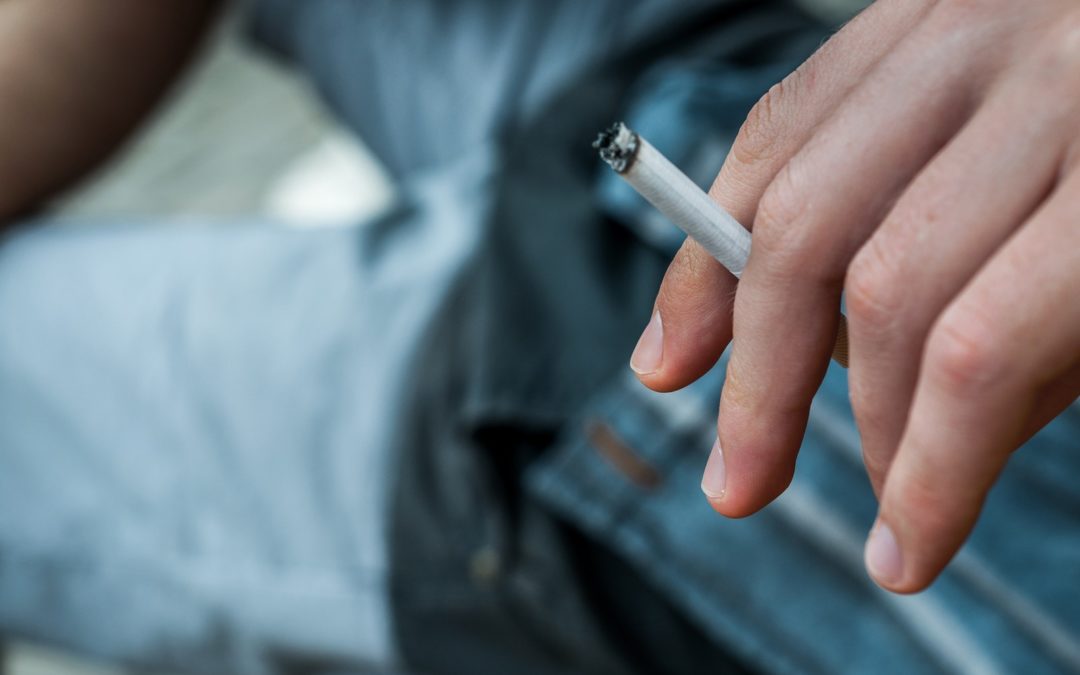Table of Contents
In today’s rapidly evolving landscape of substance use, parents and guardians may find themselves uncertain, trying to understand the intricate world of cannabis products, whose popularity among teenagers has seen a significant surge. This rise has brought forth a myriad of challenges, leaving many parents feeling overwhelmed and unequipped to address the nuances of teen substance use effectively.
One of the main concerns lies with the proliferation of cannabinoids like THC and CBD, each carrying its own set of implications for teen health and potential for abuse.
In this article, I provide a comprehensive guide for parents, focused on the critical differences between THC and CBD, empowering parents with the knowledge needed to engage in informed conversations with their teens about cannabis use, its risks, and its effects. Through understanding, we can foster a safer environment for our youth, navigating the complexities of substance use with confidence and care.
THC and CBD Explained
THC (Tetrahydrocannabinol) and CBD (Cannabidiol) are two of the most prominent cannabinoids found in the cannabis plant, each with distinct properties and effects on the human body. THC is perhaps the most well-known compound due to its psychoactive properties, which induce the “high” associated with marijuana use. This effect results from THC’s interaction with the brain’s cannabinoid receptors, altering the user’s mood, perception, and cognitive functions.
On the other hand, CBD is non-psychoactive, meaning it does not produce a high. Instead, it is lauded for its potential therapeutic benefits, influencing pain, anxiety, and inflammation responses without the intoxicating effects of THC.
The origins of both THC and CBD lie within the cannabis plant, but they are found in varying concentrations in different strains. Marijuana strains typically have higher THC levels, while hemp plants are rich in CBD with minimal THC content. This distinction is crucial, as it influences the legal status, accessibility, and usage of products derived from these plants.
The legal landscape surrounding THC and CBD is complex and varies significantly across different jurisdictions. In the United States, for example, the legal status of these compounds is determined by their source and THC content. CBD products derived from hemp (with less than 0.3% THC) are federally legal under the 2018 Farm Bill. However, CBD products from marijuana or those containing more than 0.3% THC fall under state marijuana laws, making their legality vary from state to state. Similarly, THC’s legality is strictly regulated, with recreational marijuana use being legal in some states while completely prohibited in others.
This varying legal status directly impacts the accessibility of THC and CBD products to teens. In states where marijuana is legal for recreational use, there is a higher likelihood of easier access for teenagers, despite legal age restrictions.
Conversely, CBD’s broader legal acceptance and non-psychoactive nature make it more readily available, though still regulated under laws aimed at preventing underage use. The accessibility of these substances raises concerns among parents and educators about the potential for misuse and the importance of monitoring teen usage and understanding the implications for their health and well-being.

THC vs CBD: Effects on the Teenage Brain
The teenage years are a critical period for brain development, making the impact of substances like THC and CBD particularly significant. THC, the psychoactive compound in cannabis, can have profound effects on the developing teenage brain. Research indicates that regular and heavy use of THC during adolescence may disrupt the maturation of the prefrontal cortex, the area responsible for decision-making, impulse control, and executive functions [1]. This disruption can lead to cognitive impairments, including difficulties in learning and memory, and may alter attention span and problem-solving skills.
Furthermore, there’s a growing body of evidence linking THC consumption with increased risks for mental health issues in teens, such as anxiety, depression, and psychosis, especially in those with a predisposition to these conditions [2]. A longitudinal study published in the “Journal of the American Academy of Child & Adolescent Psychiatry” found that adolescent marijuana use, particularly of high-potency products, is associated with an increased risk of developing depression and suicidal behavior in young adulthood [3]. These findings highlight the critical need for awareness and education on the potential long-term implications of THC use during adolescence.
On the other hand, CBD has garnered attention for its potential therapeutic applications, including its anxiolytic (anxiety) and antidepressant effects. Preliminary studies suggest that CBD may offer benefits for anxiety and depression, conditions that are notably prevalent during teenage years [4]. However, it’s crucial to emphasize that research into CBD’s effects on the teenage brain is still in its infancy, and much of the evidence comes from animal studies or adult human populations. While these results are promising, they cannot be directly applied to adolescents without further research.
CBD can be found in a variety of forms—vaping, oils, lotions, cocktails, coffee, gummies, and more. The importance of regulated, quality CBD products cannot be overstated, as the market is currently flooded with products of varying purity and potency. Parents and teens must be cautious, seeking out reputable sources that provide third-party testing to ensure safety and efficacy. It’s also vital to seek professional medical guidance when considering CBD for therapeutic use.
In summary, while THC poses potential risks to the developing teenage brain, CBD shows promise for therapeutic use. However, the emphasis must be on cautious, well-informed approaches to both substances, recognizing the need for further research and regulation to safeguard teen health and well-being.
Why Parents Should Be Informed
The proliferation of misinformation about THC and CBD is a significant concern, especially for parents trying to navigate the complex landscape of cannabis products and their impact on teenagers. The internet is awash with conflicting information, ranging from unfounded health claims to misleading narratives about the safety and legal status of these substances.
This environment makes it imperative for parents to seek out credible, science-backed resources to understand the nuances of THC and CBD, their effects on the adolescent brain, and their legal implications. Organizations such as the National Institutes of Health (NIH) and the Centers for Disease Control and Prevention (CDC) provide reliable information that can help parents separate fact from fiction.
Having an informed and open conversation with teens about THC and CBD requires preparation and sensitivity. Parents should approach these discussions with empathy, understanding, and factual knowledge, aiming to educate rather than lecture. It’s crucial to explain the differences between THC and CBD, emphasizing THC’s psychoactive effects and potential risks to mental health and cognitive development. At the same time, discussions about CBD should acknowledge its therapeutic potential while highlighting the need for further research and caution regarding its use among teenagers.
Parents should also stress the importance of legal considerations and the health implications of using unregulated products. Encouraging teens to think critically about the information they encounter online and in social circles is essential. By fostering an environment of trust and open communication, parents can help their teens make informed decisions about substance use.
Moreover, discussing the reasons why some people choose to use these substances, including the management of medical conditions or stress, can provide a broader perspective and foster empathy. It’s also beneficial for parents to listen to their teens’ views and experiences with cannabis, as this can lead to a more engaging and productive dialogue.
In conclusion, being informed and maintaining open lines of communication are key strategies for parents navigating the topic of THC and CBD with their teenagers. By prioritizing accurate information and empathetic conversation, parents can play a crucial role in guiding their teens through the complexities of cannabis use and its implications.
Substance Abuse Concerns
Recognizing signs of cannabis abuse in teenagers is crucial for early intervention and support. Cannabis, especially products high in THC, can lead to patterns of abuse that manifest through various physical, behavioral, and psychological signs.
Physical
Physical symptoms may include red eyes, persistent cough, increased appetite, and unexplained weight gain.
Behavioral
Behaviorally, teens may exhibit a decline in academic performance, loss of interest in previously enjoyed activities, changes in friend groups, secretive behavior, and missing important commitments.
Psychological
Psychologically, signs of cannabis abuse can include mood swings, irritability, lethargy, and a noticeable lack of motivation.
Consider Clearfork Academy
For families facing the challenge of THC treatment for teens, Clearfork Academy offers hope. As a specialized facility for adolescents struggling with addiction, including cannabis abuse, Clearfork Academy provides a comprehensive approach to recovery. The academy offers both inpatient and outpatient programs, designed to meet the unique needs of each teen. These programs are rooted in evidence-based practices and are tailored to address not only the substance abuse itself but also the underlying emotional and psychological factors contributing to the behavior.
Clearfork Academy’s approach emphasizes compassion, understanding, and personalized care. Through a combination of therapy, education, and support, teens are equipped with the tools they need to overcome substance abuse and reclaim their lives. The academy’s dedicated team works closely with families, offering guidance, education, and support throughout the recovery process, fostering an environment of healing and growth.
For parents noticing signs of cannabis abuse in their teens, Clearfork Academy represents a valuable resource. By intervening early and seeking specialized support, families can navigate the path to recovery together, building a foundation for a healthier, substance-free future.

Key Takeaways
- Many parents feel overwhelmed and unequipped to address the nuances of teen substance use effectively, particularly the difference between THC and CBD, two of the most prominent cannabinoids found in the cannabis plant, each with distinct properties and effects on the human body.
- THC is perhaps the most well-known compound due to its psychoactive properties, which induce the “high” associated with marijuana use.
- CBD is non-psychoactive, meaning it does not produce a high. Instead, it is lauded for its potential therapeutic benefits, influencing pain, anxiety, and inflammation responses without the intoxicating effects of THC
- Marijuana strains typically have higher THC levels, while hemp plants are rich in CBD with minimal THC content.
- The legal landscape surrounding THC and CBD is complex and varies significantly across different jurisdictions.
- CBD products derived from hemp (with less than 0.3% THC) are federally legal under the 2018 Farm Bill.
- THC, the psychoactive compound in cannabis, can have profound effects on the developing teenage brain.
- There is a body of evidence linking THC consumption with increased risks for mental health issues in teens, such as anxiety, depression, and psychosis, especially in those with a predisposition to these conditions.
- CBD has garnered attention for its potential therapeutic applications, including its anxiolytic and antidepressant effects.
- The importance of regulated, quality CBD products cannot be overstated, as the market is currently flooded with products of varying purity and potency.
- The proliferation of misinformation about THC and CBD is a significant concern, especially for parents trying to navigate the complex landscape of cannabis products and their impact on teenagers.
- Having an informed and open conversation with teens about THC and CBD requires preparation and sensitivity.
Sources
[1] Jacobus, J. and S. Tapert. 2014. Effects of Cannabis on the Adolescent Brain. Curr Pharm Des. 2014; 20(13): 2186–2193.doi: 10.2174/13816128113199990426
[2] Sultan, R. et al. 2023. Nondisordered Cannabis Use Among US Adolescents. AMA Netw Open. 2023;6(5):e2311294. doi:10.1001/jamanetworkopen.2023.11294
[3] Gobbi, G. et al. 2019. Association of Cannabis Use in Adolescence and Risk of Depression, Anxiety, and Suicidality in Young Adulthood. JAMA Psychiatry. 2019;76(4):426-434. doi:10.1001/jamapsychiatry.2018.4500
[4] Stanciu, C., et al. 2021. Evidence for Use of Cannabinoids in Mood Disorders, Anxiety Disorders, and PTSD: A Systematic Review. Psychiatr Serv. 2021 Apr 1; 72(4): 429–436. Published online 2021 Feb 3. doi: 10.1176/appi.ps.202000189

Anna graduated from Texas Tech University in 2012 with a Bachelor of Arts in Psychology and from Texas Wesleyan University in 2015 with a Master of Arts in Professional Counseling. Anna has been in the mental health field since 2015 and held a variety of leadership roles since 2017 in Residential, Inpatient, PHP/IOP and private practice levels of care. Anna approaches therapy and leadership with the mindset that we are all one life event from seeking care ourselves and aims to foster an environment in which both the client and staff well-being are the priority. Anna is an introverted foodie who enjoys reading, watching dateline/sports and spending time with her husband, daughter, and fur babies, Dora & Teddy.




